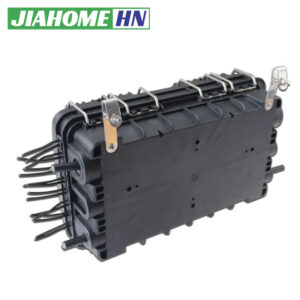Fiber Optic Patch Panel Distribution Terminal Box
FEATURES:
• Standard size, light weight and reasonable structure
• Splice tray inside changeable
• 19-inch standard size, light in weight and robust structure
• Suitable for ribbon and single fiber
• Various panel plate to fit different adapter interface
• Front mark on the plate is easy for identification and operation
• 24C, 36C, 48C, 96C,144C optional, with or without fiber optic pigtails and adapters
• Easy for management and operation
描述
Fiber optic distribution box serves as a centralized point for managing, distributing, and connecting optical fibers. It combines the functionalities of a patch panel and a terminal box (for protecting and terminating fiber optic cables). This device is commonly used in data centers, telecom rooms, and other network infrastructure environments.
This Sliding Fiber Optical patch panel is a 19-inch standard type with 2 steel rails at the side of the panel. It is can be equipped with 2 fiber splice trays for 1U type . The maximum fiber core is up to 48cores. The sliding Fiber Optical patch panel perform fiber splicing, distribution, termination, patching, storage and management in one unit.
Fiber Optic Distribution Box Key Features:
- Cable Management:
- The box includes a patch panel with connectors where fiber optic cables can be plugged in and organized, making it easier to manage and maintain connections.
- Distribution:
- The terminal box serves as a hub where incoming and outgoing fiber optic cables are connected, allowing for efficient distribution of signals to various endpoints.
- Protection:
- The box provides physical protection for fiber splices and connectors, shielding them from environmental factors such as dust, moisture, and physical damage.
- Compact Design:
- Typically designed to be mounted on walls, inside racks, or on poles, it offers a compact solution for dense fiber management in limited spaces.
- Flexible Configuration:
- Available in various configurations to support different fiber counts (e.g., 12, 24, 48, or more fibers) and connector types (e.g., SC, LC, ST, FC).
- Splicing and Patching:
- Allows for both splicing and patching of fiber optic cables. The box usually has designated areas for splicing trays and patching ports.
- Access and Maintenance:
- Often designed with hinged doors or removable covers for easy access during installation and maintenance. Some models feature lockable doors for security.
- Environmental Durability:
- Built to withstand various environmental conditions, especially outdoor versions that may include weatherproof seals and robust materials to protect against UV rays, rain, and temperature extremes.







